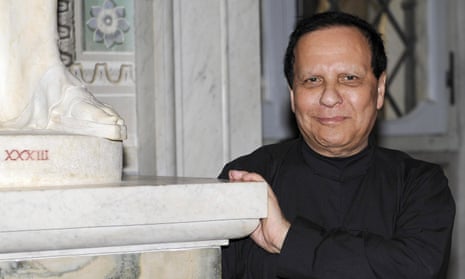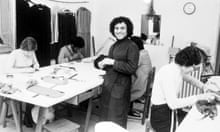Designer Azzedine Alaia, whose timeless gowns won an army of devotees around the world, has died at the age of 77, France’s fashion federation said on Saturday.
Alaia, who was French-Tunisian, rose to fame in the 1980s, refused to march to the beat of international fashion weeks, releasing his collections in his own time with little concern for publicity.
“We have lost a designer of great talent. It is very sad news,” said designer Pierre Cardin.
There was an outpouring of tributes from fashion-lovers online, with designer Inès de la Fressange tweeting: “Small in stature but huge in the world. Adieu Azzedine Alaia.”
Victoria Beckham tweeted:
A sad day. Rest in peace #azzedinealaia ...You were a true master and one of my biggest inspirations 🙏 x VB pic.twitter.com/ZIFMRtHHCH
— Victoria Beckham (@victoriabeckham) November 18, 2017
Kylie Minogue tweeted: RIP #azzedinealaia .... A gentleman and a genius.”
Alaia was born to a farming family in Tunisia in 1940 and studied sculpture at the capital’s fine arts school before working at a modest neighbourhood dressmaker’s shop. He moved to Paris in the late 1950s, working briefly for Dior and Guy Laroche before eventually going solo, winning a reputation for sexy designs celebrating the female form.
“I like women,” he said in a 2013 interview. “I never think about doing new things, about being creative, but about making clothing that will make women beautiful.”
He joked at the time: “It’s better that I come clean about it while I’m alive – I won’t give a damn about it when I’m dead.”
Alaia himself was discreet and invariably clad in a black high-necked Chinese suit.
His catwalk shows at his shop in Paris’s chic Marais district were low-key as well, earning a loyal clientele of fashionistas who wanted luxury without showing off.
Former US first lady Michelle Obama was among his haute couture fans, but Alaia also produced ready-to-wear collections, while ignoring pressure to systematically refresh his ideas every season.
He signed a development deal with Prada in 2000, but quit seven years later to work with Swiss luxury group Richemont.
Perhaps due to his training as a sculptor, Alaia worked on his designs from their conception in 3D, rarely visualising them first using pen and paper. Global success did not change his working habits and he continued throughout his career to work deep into the night, often to the soundtrack of old movies.
“With him, everything was at its height – couture, art, the demand he put on people,” said François-Henri Pinault, the chief executive of luxury group Kering.
Rest in piece, master #azzedinealaia :( pic.twitter.com/ZBCaV8JhGS
— Valerie B (@modavisionaire) November 18, 2017
His final show, in July, was opened by supermodel Naomi Campbell – one of his protegees – who affectionately knew him as “Papa”.





